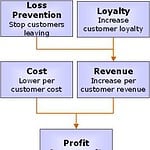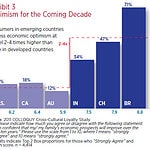In today’s marketplace, consumers are bombarded with competitions as companies fight to attract new customers and retain existing customers. Some companies are extremely successful in achieving their marketing objectives through the use of competitions, whilst others fail dismally. So why do some companies fail with competitions and others succeed? It’s all due to planning and implementation.
Here are the four keys to making your competitions as successful as possible:
1. Make sure competitions are part of your overall marketing strategy
Competitions need to be incorporated into your marketing strategy not just tacked on the side as an afterthought.
By incorporating the competition into the overall marketing plan, the evaluation can go beyond the traditional campaign success indicators. Core business drivers such as whether the competition stopped customers from leaving or stimulated product usage become more important than simply how many entries you received.
Another reason to integrate competitions is to ensure that they do not clash with the rest of your programmes.
Maybe you want to launch a new product but you need client requirements to feed into the development process. You could use a series of competitions aimed at existing customers and asking couple of different research questions in each competition. This approach can yield a large amount of accurate information, but it needs to be integrated with the rest of your campaigns so as not to clash with them.
Also, as far more customers now want to control their relationship with a company, any contact needs to add value to the customer relationship. A competition can be a way to add value and at the same time reinforce your customer strategy but you need to make sure it is in tune with the rest of that strategy.
2. Target the right customers
Just as you target the rest of your campaigns, you need to target the right customers for your competitions in order to achieve the maximum result. Areas to focus on include the target list, communication medium, the competition mechanic and rules.
The prize(s) you offer can also have a major impact on attracting the right type of entrant. For example, it is common for banks to target home lenders by running a competition where winners receive a lump sum off their new home loan. Far more business value might be obtained by offering lifestyle packages that include income protection insurance, a smaller lump sum off the loan and a lump sum into a managed fund.
This prize attracts customers that are potential cross sell customers not just customers looking only for a home loan product. In addition, not only is it a prize, but it’s also a promotion of the bank’s product portfolio, helping it to differentiate itself from its competitors. All of sudden the competition is serving a dual purpose.
3. Broaden your communications medium
Multiple communication mechanisms also play an integral role in implementing a successful competition. Appropriate mechanisms need to be used to encourage customers to enter the competition in the way they feel most comfortable.
By using multiple mechanisms such as facebook, twitter, phone, SMS, email, online website and post mail, you will be able to identify the contact mechanisms that your customers prefer. This means that future contact with them can be customised to their preferred methods of communication, leading to a stronger customer relationship.
However, be aware that a common pitfall is the complexity that arises from implementing a competition across a variety of communication mechanisms. Make sure that your vendor is adept at handling all the media you wish to use and that they can provide an integrated implementation and view of the results. Otherwise, you could have difficulty in evaluating whether the competition met its success criteria.
4. Collect the data and make use of it
Now the competition is over, make use of the wealth of data you have gathered. Competitions create a window of opportunity to collect and analyze customer information. Customers are susceptible to providing real feedback in a competition entry, but many companies do not utilize this data to learn more about their customers.
Competition question content is also vital to collecting useful information that can lead to sales leads capture, cross sell and up-sell opportunities, churn triggers, education gaps hindering product usage etc. This customer data analysis can be incorporated into existing customer database information to enhance overall customer knowledge for your business.
In my experience, the average response rate for competitions is 2%. However, clients that have adopted a customer value approach and focused on these four keys have been able to achieve response rates of up to 18%. This has significantly improved the returns on their marketing investment and ultimately lowered the cost to acquire and retain customers.










